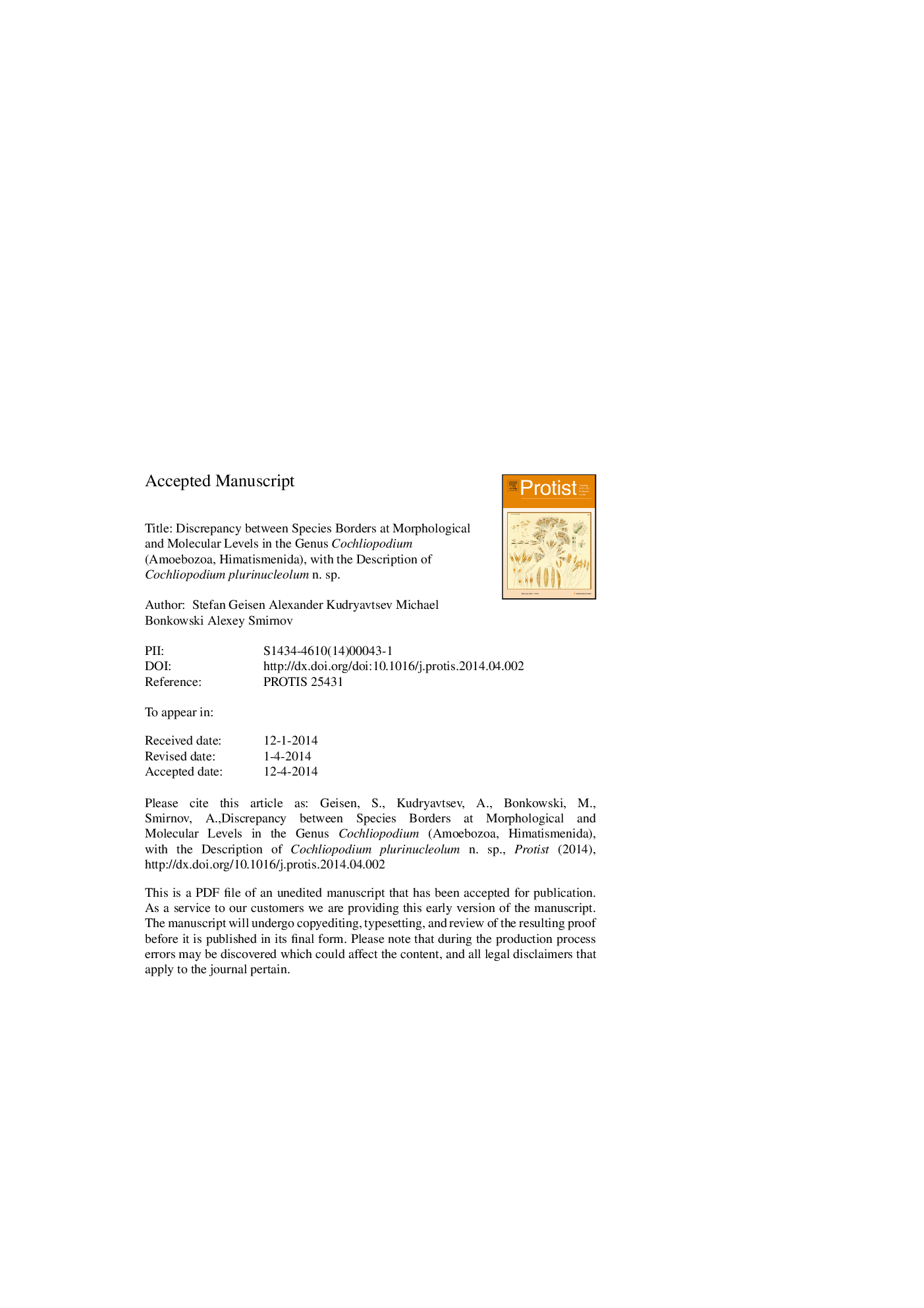| Article ID | Journal | Published Year | Pages | File Type |
|---|---|---|---|---|
| 10879078 | Protist | 2014 | 46 Pages |
Abstract
Amoebae of the genus Cochliopodium are characterized by a tectum that is a layer of scales covering the dorsal surface of the cell. A combination of scale structure, morphological features and, nowadays, molecular information allows species discrimination. Here we describe a soil species Cochliopodium plurinucleolum n. sp. that besides strong genetic divergence from all currently described species of Cochliopodium differs morphologically by the presence of several peripheral nucleoli in the nucleus. Further, we unambiguously show that the Golgi attachment associated with a dictyosome in Cochliopodium is a cytoplasmic microtubule organizing center (MTOC). Last, we provide detailed morphological and molecular information on the sister clade of C. plurinucleolum, containing C. minus, C. minutoidum, C. pentatrifurcatum and C. megatetrastylus. These species share nearly identical sequences of both, small subunit ribosomal RNA and partial Cox1 genes, and nearly identical structure of the scales. Scales of C. pentatrifurcatum differ, however, strongly from scales of the others while sequences of C. pentatrifurcatum and C. minus are nearly identical. These discrepancies urge for future sampling efforts to disentangle species characteristics within Cochliopdium and to investigate morphological and molecular patterns that allow reliable species differentiation.
Related Topics
Life Sciences
Agricultural and Biological Sciences
Agricultural and Biological Sciences (General)
Authors
Stefan Geisen, Alexander Kudryavtsev, Michael Bonkowski, Alexey Smirnov,
